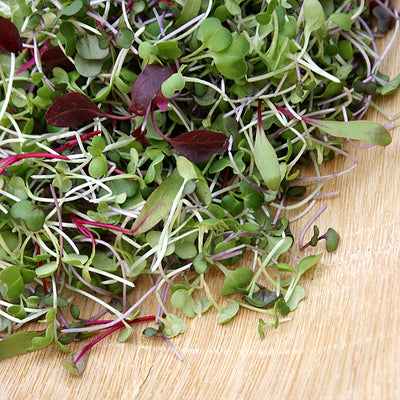
6 Essential Gardening Jobs For September 2020
Written by - Kaitlynn from MIgardener
Happy September, everybody! In preparation for the cold season, today, we will take note of these six essential gardening jobs for your fall to-do list. The fall gardening season is a much calmer, easygoing version of the spring and summer garden. I find this season much easier to work with because it allows me to enjoy my time outside instead of sweating in the summer heat! If you are gardening in a colder climate and have started preparing for fall, make sure these jobs make your to-do list!
Let's get started.
1. Seed Saving
Seed saving is one of the most incredible benefits too planting heirloom varieties. Depending on the type, seed saving techniques will vary. Seed viability will decrease over time, but there are a few tricks you can do to keep save seeds fresher for longer. Keep them dry above all else. Below freezing temperatures are recommended for maintaining long term viability. Keep seeds in the dark. Light and sunlight can both break down the seed coating as time passes. Enzymes will break down and cause seeds to rot or sprout early. The freezer is the best place to store seeds because it meets all the requirements we just listed. We recommend storing seeds or seed packets in a wide mouth mason jar or a ziplock bag before placing them in the back of the freezer. This is the perfect environment for long term storage.
2. Bring Houseplants Indoors
The warm summer nights will soon be coming to an end. To help your plants acclimate correctly and avoid shock, bring your plants inside before the first frost hits — any potted plants that are not perennials or are not perennials in your zone. Before you bring plants in, reduce the amount of watering to avoid further shock. Do not transplant into a new pot until spring. Transplanting in the fall season will shock the plants as it is already transitioning to a new environment indoors. To prevent pests from invading your house, mulch your pots with a layer of sand to prevent gnats from laying eggs in the soil. To deter ants from spreading, place the pots above a dish of borax and water to collect the dead pests until they no longer inhabit the planters. Be sure not to let the plant sit in the mixture. Transfer your plants indoors slowly, as a way to help them adjust.
3. Plant Bulbs For Spring
Planting bulbs in the fall is the most proactive way to see the earliest signs of spring. Flowers like daffodils, crocuses, hyacinths, and tulips should be planted before winter for the best results in the garden. This rule also applies to garlic to ensure a summer harvest. If your focus is on a flower garden, you can grow allium varieties to see them flower! For more on planting garlic, check out this video.
4. Plant Fall Varieties (Now or never)
Now is the time to plant fall varieties, especially in northern climates! Most are surprised to hear that yes, you can grow food in the fall season just like you can in the spring. Some feel that the fall garden is easier to manage than the spring and summer! Varieties like lettuce, swiss chard, kale, turnips, beets, and spinach, claytonia, and peas are all fantastic to start now, so the frost can make them sweeter than ever before. For more on how to plant a fall garden, click here.
5. Divide and Plant Perennials
Because of advertising and Spring fever hype, most are under the impression that spring is the only time to plant. However, with perennials (herbs, fruit trees, fruit bushes, and even flowers), fall planting is a superior option. Springtime is tricky because of the frozen ground and the increase in risk that your plants will experience heatstroke or dehydration. Newly planted perennials need heavy watering while their root systems establish. The fall season is ideal for helping perennials become secure before winter. Planting them early will allow them to bud as soon as possible in the spring. An additional benefit is that perennials like fruit trees are sold for discounted prices in the fall at nurseries and garden shops! Performing this simple project now will save you time and money in the garden.
6. Re-Ammend The Soil
When you take care of your soil year after year, it creates a healthy ecosystem that decreases the chance of soil born illnesses harming your plants. Replenish your soil to keep nematodes and soil born funguses out of future harvests. There is no amount of compost that is too much in a garden. Compost is the perfect growing medium and should be the base for any garden bed. If you already have a bed of compost, amending it after pulling up the summer harvest is simple. MIgardener recommends worm castings for nutrients, azomite dust for trace minerals, humic acid to trace minerals, and kelp meal if the other mineral sources are not available. Even if you are not planning on planting any more in that bed, this is the perfect combination of amendments to keep your soil healthy through the cold season. Add a helping of a multi-purpose fertilizer like Trifecta+ if you are planting a fall garden.
I hope this little introduction sparked some curiosity for you.
Did you find this post helpful? MIgardener is passionate about sharing free gardening tips and information! If you are looking for inspiration in the garden, make sure to check out our Pinterest page. New ideas and inspiration can be found there at any time. Check us out at MIgardener.com or on youtube, Instagram, and Facebook.







Please let me know when your garlic is available.
Leave a comment